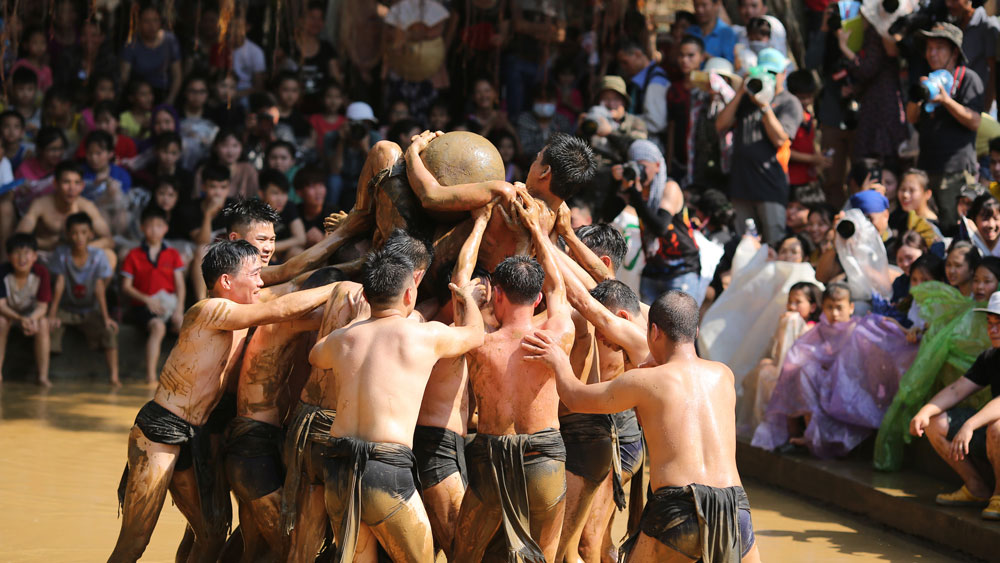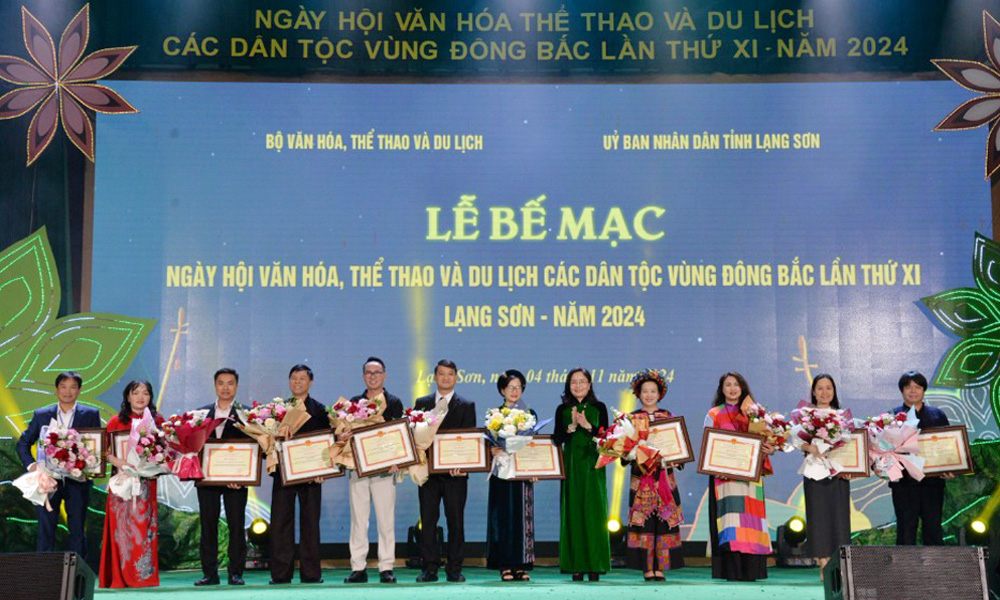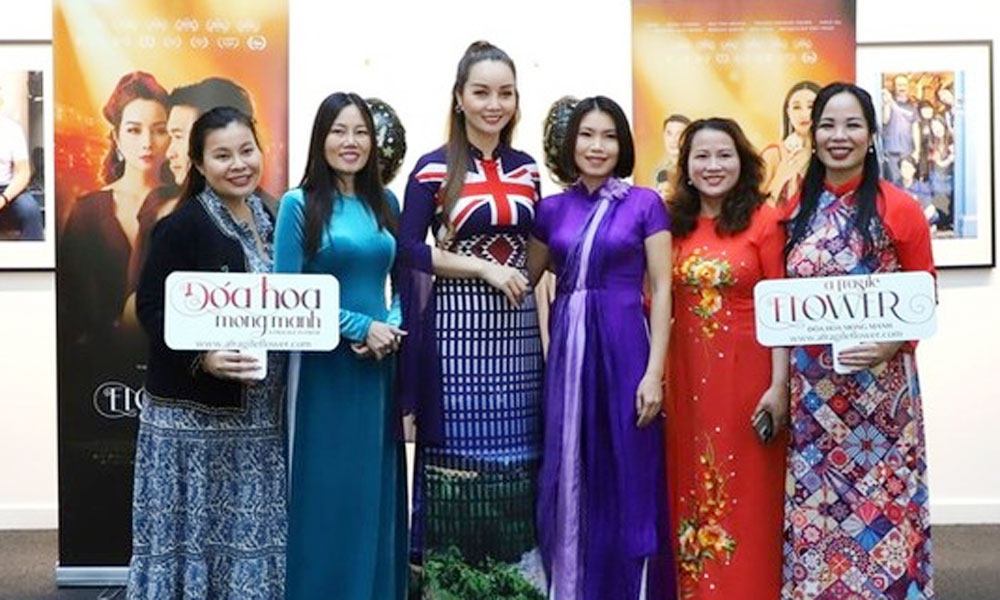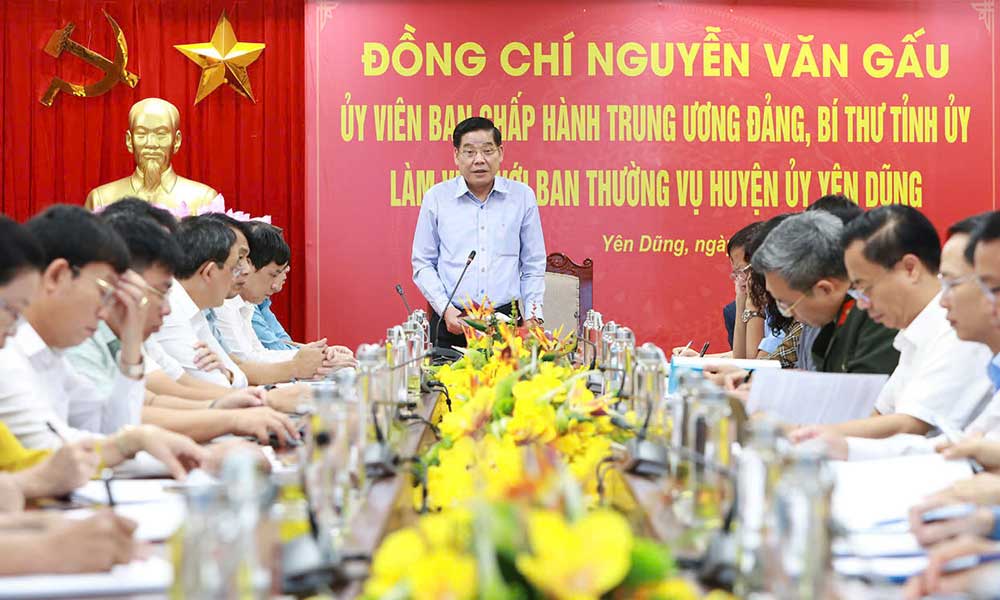Unique cultural heritages of Van village
In the system of religious works here, there is the Thuong (Upper) Temple worshiping Saint Cao Son during the Hung Vuong (Hung Kings) period. The temple now has architecture following the Chinese character丁,including a three-room front hall and a two-room back house, with the altars, tablets and many other worshipping items inside.
 |
|
The mud ball wrestling festival in Van village. |
The Trung (Middle) Temple, located in the center of the village, was built to worship great mandarin Trinh, who was credited with building Dien Phuc Pagoda, preaching and donating land to the village.
Ha (Lower) Temple is located next to Cau River, including a mud ball wrestling yard, the front house, water pipes and the back house. Ha Temple is a place to worship Saint Tam Giang during the Ly Nam De reign who deserved credit for fighting the Liang invaders.
The Van Communal House was built in the Le dynasty (17th century) with imposing architecture, including a front hall for worshipping and a large communal house where Saint Tam Giang is worshipped. Dien Phuc Pagoda is located in the center of Van village, used to be a famous fairy landscape.
In addition to the system of Buddha statues that are unique art works, in the pagoda, there are more than 100 Chinese steles engraved in Chinese characters which are very attractive to tourists. Doc Pagoda (Quang Lam Tu) was built in the Le dynasty in the 17 th century at the end of the village. This is the place where the Buddha is worshipped and the villagers hold a ceremony in the beginning of the lunar year associated with the custom of worshiping the craft founder and keeping the secret of wine-making in Van village.
The temple of literature is located at the top of the village, including the front, middle and back halls, and an open-air altar. It is a place to worship Confucius and his four disciples, along with scholars who pursued education career in the village.
In Van village, there is Tam Bao market that is opened on the 25th day of the last lunar month in front of the three-door gate of Dien Dien Pagoda. In 1688, the village inaugurated the three-door gate of Dien Dien Pagoda, so the market was opened to sell all kinds of goods serving daily activities and production.
Van Village is also known for its famous traditional craft of making wine. Van village wine used to be an offering to kings and was often used in royal banquets.
In addition, Van village also owns many valuable intangible cultural heritages. The mud ball wrestling festival held on the 12th, 13th and 14th days of the fourth lunar month dates back to the Ly Nam De period in the 6th century.
According to the legend, after the army of Saint Tam Giang defeated the Liang invaders, the local people opened the festival to celebrate the victory.
Before wrestling competitions, people organize a ball worshipping ceremony. When the game master throws the ball into the yard, the two sides struggle to push the ball into the opponent's hole. If one side succeeds in pushing the ball into the other’s hole, they are winners. The festival aims to pray for bumper crops and favourable weather.
Van village has a tradition of twinning with Dong Gao village in Yen Phong district (Bac Ninh province). They became the twin villages when Yen Vien village was ordained and Dong Gao village built a pagoda in 1703. In the following year, Dong Gao village repaired the pagoda and Yen Vien villagers donated four pillars. The people in the two villages set up their twinning ties in 1705, regarding each other as siblings, helping each other in life, especially when the two villages have big events or face difficulties and troubles.
Van village, with its famous trade village brand name, is the land still preserving many good customs. Those cultural values have been preserved and promoted today, becoming potential and good conditions for the locality to develop its tourism-based economy.
Dong Ngoc Duong
 Bắc giang
Bắc giang
















Reader's comments (0)